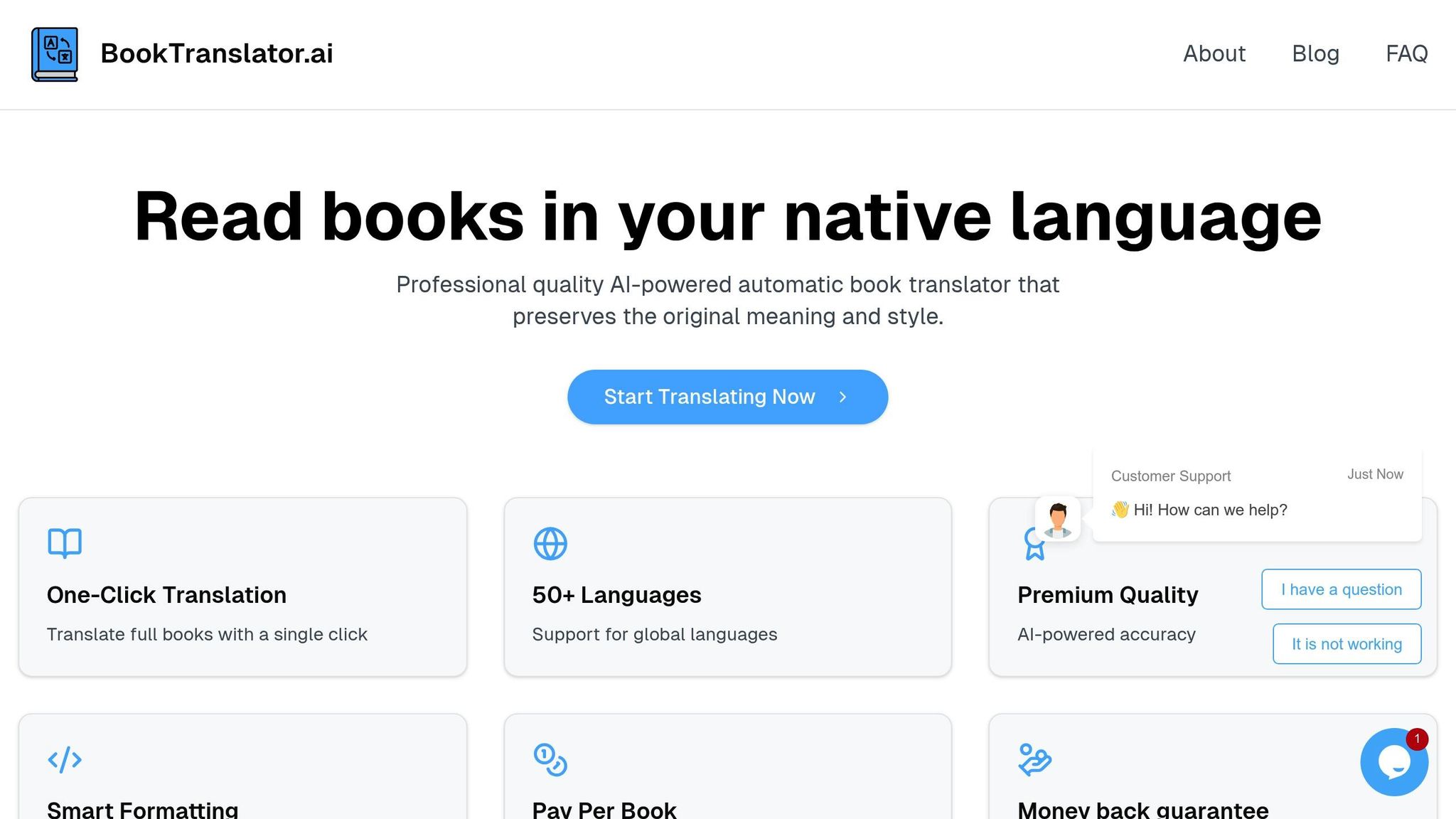
AI vs. Human Translators: Metaphor Accuracy Compared
Metaphors are tricky to translate. They carry deep meanings, cultural nuances, and emotional weight that can easily get lost in translation. So, how do AI and human translators compare when it comes to metaphor translation? Here’s a quick breakdown:
- AI Translators: Fast, consistent, and great at spotting patterns. But they struggle with cultural context, subtle nuances, and unique metaphors.
- Human Translators: Excellent at understanding cultural and emotional depth. However, they’re slower, costlier, and sometimes subjective.
Quick Comparison
| Metric | AI Translators | Human Translators |
|---|---|---|
| Processing Speed | Translates 100,000 words instantly | Slower, depends on complexity |
| Cost | $5.99–$9.99 per 100,000 words | Higher, varies by project |
| Cultural Context | Limited understanding | Strong grasp of cultural nuances |
| Consistency | High (retains style and formatting) | May vary between translators |
| Nuance | May miss subtle meanings | Better at interpreting subtle details |
Key takeaway: AI is fast and cost-effective for large-scale projects but lacks human-like cultural understanding. Combining both - AI for speed and humans for refinement - delivers the best results.
The Translation Heavyweight Championships: AI vs Human
AI Translation of Metaphors
AI tackles figurative language by analyzing patterns and context. This method forms the foundation for both its strengths and its challenges.
Benefits of AI Translation
AI translation offers several advantages:
- Speed and Consistency: Quickly translates large volumes of text without losing consistency.
- Pattern Recognition: Identifies recurring metaphorical patterns to retain their intended meaning.
For example, BookTranslator.ai's Pro plan ($9.99 per 100,000 words) uses advanced AI models to ensure metaphorical accuracy while keeping the original style and formatting intact.
Weaknesses of AI Translation
Despite its strengths, AI has some clear limitations:
- Cultural Context: Struggles with metaphors tied to specific cultural references.
- Subtlety: May miss key nuances in metaphors that rely on delicate contextual cues.
- Originality: Faces difficulty with unique or unconventional metaphors not included in its training data.
To tackle these issues, BookTranslator.ai includes features designed to improve metaphor translation.
Features of BookTranslator.ai

| Feature | Purpose | How It Helps |
|---|---|---|
| Smart Formatting | Keeps the original layout intact | Ensures metaphors stay in context |
| One-Click Translation | Simplifies the translation process | Speeds up workflow |
| 99+ Language Support | Covers a wide range of languages | Adapts metaphors effectively across languages |
BookTranslator.ai also offers two pricing tiers: a Basic plan ($5.99 per 100,000 words) for simpler texts and a Pro plan ($9.99 per 100,000 words) for more complex, metaphor-heavy content.
The focus of AI translation lies in balancing literal accuracy with emotional depth - critical for metaphors that carry significant thematic weight.
sbb-itb-0c0385d
Human Translation of Metaphors
Human translators use their cultural knowledge and understanding of context to interpret metaphors. However, research doesn’t provide much detailed evidence about the pros and cons of this approach. On the positive side, human translators can grasp subtle cultural meanings. On the downside, this method can take more time, cost more, and sometimes lead to subjective interpretations. These uncertainties highlight the contrast with the structured approach of AI translation, making it an interesting area for comparison.
Direct Comparison: AI vs. Human Metaphor Translation
This section highlights how translation methods influence the preservation of metaphorical depth in literature. Building on earlier points, we now examine AI and human translation through specific metrics.
Key Comparison Metrics
When evaluating translations, several factors come into play: semantic accuracy (maintaining the original meaning), cultural context (handling culturally specific expressions), processing speed, cost, and consistency in style and formatting. AI translation systems are designed to tackle intricate metaphorical expressions while keeping the original style intact. These metrics provide a clear framework for assessing AI's performance.
Performance Overview
The table below outlines performance metrics for AI translations, specifically using BookTranslator.ai:
| Metric | AI Translation |
|---|---|
| Processing Speed | Translates 100,000 words instantly |
| Consistency | Automatically retains style and layout |
Human translators, on the other hand, excel in cultural understanding and nuanced interpretations. However, their work tends to be slower and more expensive, and standardized metrics for evaluating human translation are harder to define.
BookTranslator.ai demonstrates how AI can manage complex literary metaphors with speed and consistency, making it especially useful for large-scale literary projects. While AI offers measurable efficiency, it complements the cultural and interpretative strengths of human translators, ensuring metaphorical accuracy across languages.
Conclusion: Combining AI and Human Skills
Key Takeaways
AI and human methods each bring distinct strengths to metaphor translation. Tools like BookTranslator.ai provide fast and consistent results, processing up to 100,000 words instantly. Pricing starts at $5.99 per 100,000 words for the Basic plan and $9.99 per 100,000 words for the Pro plan, making it a budget-friendly option.
On the other hand, human translators excel at interpreting cultural contexts and subtle nuances. Their ability to maintain the essence of metaphors across languages is unmatched, though this process takes more time and can be more expensive. Despite these limitations, their expertise is critical for literary works that require a deeper level of understanding.
These findings suggest that combining AI and human efforts creates a more efficient and precise translation process.
Practical Tips for Translation
Blending AI tools with human expertise ensures high-quality translations. A structured approach can help balance speed with accuracy:
| Phase | Tool | Focus |
|---|---|---|
| Initial Processing | AI Translation | Converting and formatting the text |
| Expert Review | Human Translator | Refining cultural and metaphorical details |
| Final Quality Check | Combined | Ensuring coherence and stylistic consistency |
Start with AI platforms like BookTranslator.ai for the initial draft. This allows human translators to dedicate their efforts to refining complex metaphors and ensuring cultural relevance.